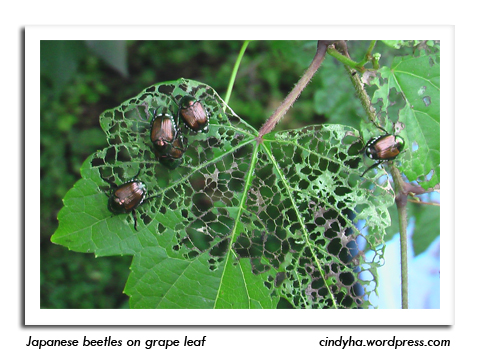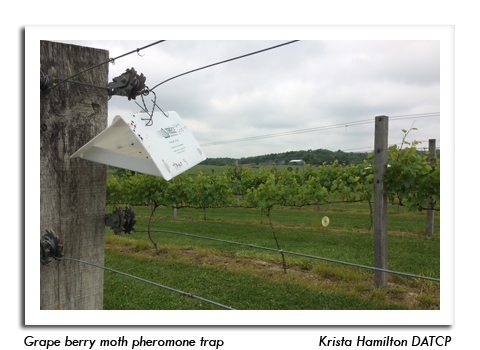
 |
|
|
Fruits
Volume 60 Number 11 Date 07/02/2015 CODLING MOTH - The first flight has declined at some locations and continued at others. The weekly average count based on reports from 32 orchards was only three moths per trap. Apple growers should continue to monitor degree days and trap captures until 650-700 degree days (base 50°F) have accumulated from the spring biofix to determine the flight timing and if reapplication of CM insecticides is needed. Most flights should subside once 700 degree days are reached after the first biofix. JAPANESE BEETLE - A grape grower reports that these insects are defoliating grape vines in the Genoa area of Vernon County. Beetles are also appearing in some western Wisconsin apple orchards. Damage to fruits, ornamentals and field crops is expected to intensify over the next five or six weeks and control may be necessary to prevent fruit loss. Most chemical treatments are only effective against Japanese beetle when populations are low and the adults are first immigrating into vineyards and orchards. Fruit growers should note the daily location of beetles when timing an insecticide application since feeding occurs in trees and on vines during the day and closer to the ground at night. GRAPE BERRY MOTH - According to the grape berry moth (GBM) degree-day model developed by MSU, egg laying increases at approximately 810 and 1,620 degree days after wild grape bloom for the second and third GBM generations, respectively. A total of about 600 degree days (simple base 47°F) have accumulated near Viroqua in Vernon County since wild grape bloom began on June 5. The start of egg laying has been predicted for July 12 in the Viroqua area. Insecticides targeting GBM just before egg hatch (i.e., insect growth regulators) will be most effective if applied at this time. By contrast, broad spectrum insecticides directed against GBM larvae should be delayed until 1,010 degree days, or approximately 10 calendar days later (July 22). The use of pheromone traps to monitor GBM flights and properly time controls is strongly recommended. POTATO LEAFHOPPER - This insect is appearing in greater numbers in orchards as harvesting of second-crop hay increases. Non-bearing, one- to two-year-old trees are most susceptible to leafhopper feeding and should be monitored for upwards leaf cupping and yellowing of terminal shoots caused by the adults and nymphs. Treatment is justified at levels of one or more nymphs per leaf when hopperburn symptoms are apparent. -- Krista Hamilton, DATCP Entomologist 





|
|
|